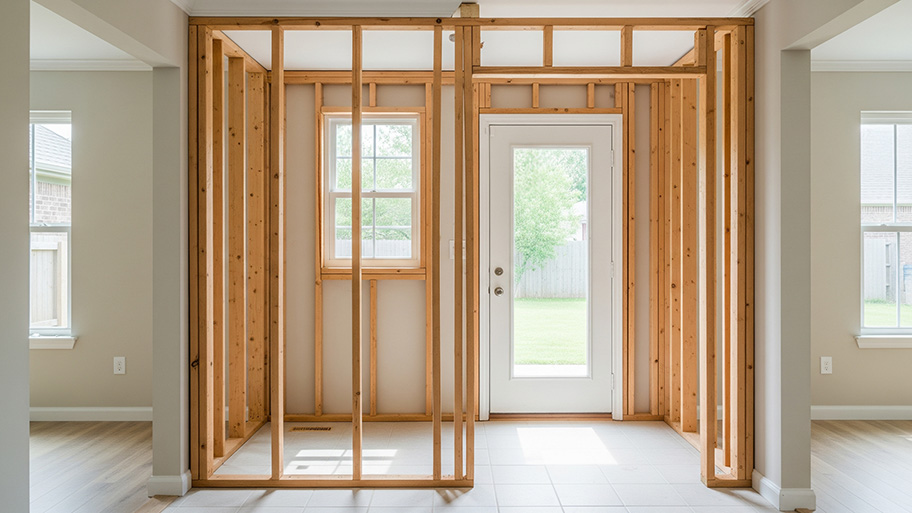
Sometimes, all your home needs is a new wall to make a room or provide an updated function to an existing space. Learn how much it costs to install a new wall.
Our seal of approval for closing gaps the non-traditional way


Caulk alternatives often provide easier installation and a finished look, but talk to a caulking service pro to make sure you use the right product for your project.
Spray foam can fill large gaps and provide structural strength but can get messy.
Sealant tape and silicone putty offer easy application, but durability can be an issue.
Caulk strips provide a sleek, uniform appearance for areas where appearance matters and where there aren’t sharp angles or curves.
Weather stripping is a good choice for windows and doors where drafts and noise can sneak into the home.
When it comes to sealing gaps in your home, caulk isn’t the only way to go. However, finding the right caulk alternative for your project is crucial for both effectiveness and ease of use. Whether you're sealing visible gaps, insulating your attic, or preventing water leaks, knowing your options beyond traditional caulk can save you time and money. Let’s explore five popular caulk alternatives, each with unique benefits and applications.
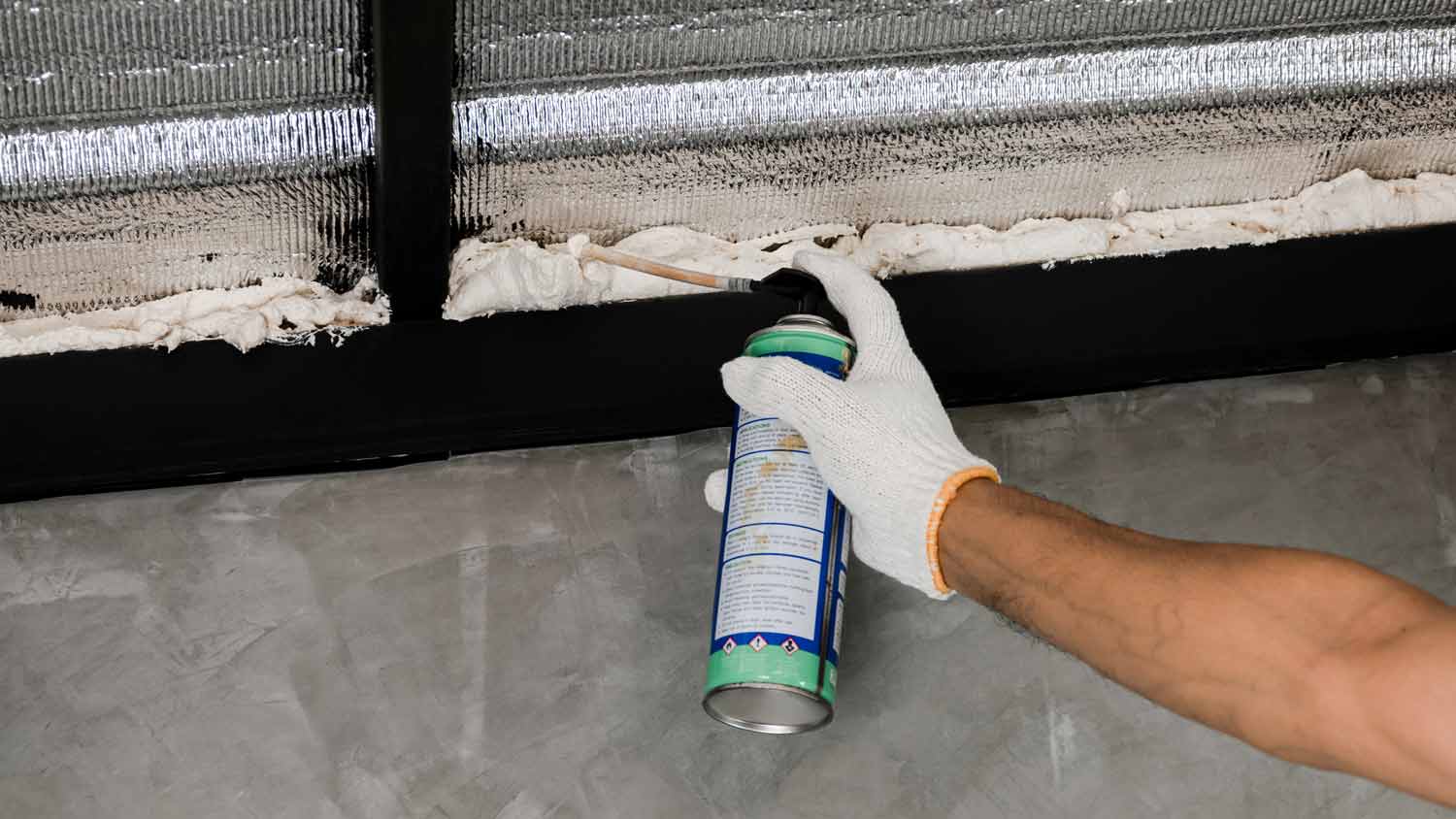
Spray foam is used for insulation and sealing gaps, and it’s incredibly versatile. It expands on application and hardens to fill cracks and gaps efficiently. This material is ideal for larger spaces and areas that require a durable seal. Once it cures, spray foam provides excellent insulation and structural strength to the area where you applied it.
| Pros | Cons |
|---|---|
| Fills large gaps | Messy application |
| Excellent insulation | Need specific tools |
| Structural strength | Hard to remove |
| Durable with a long life | Not aesthetic |
Best for:
Sealing large gaps in walls or around pipes
Filling gaps in new construction projects
Areas requiring structural reinforcement

Sealant tape is a flexible, adhesive-backed material that you can use to seal joints and gaps. It is especially useful for quick fixes and temporary solutions. The tape adheres to various surfaces, creating a waterproof seal. It’s easy to apply and doesn’t require special tools, making it a popular choice for DIY enthusiasts looking for a quick and effective solution.
| Pros | Cons |
|---|---|
| Easy to apply | Not great for large gaps |
| Easy to remove | Poor adhesion in damp areas |
| Can be used on many surfaces | Limited life span |
| Waterproof seal | Temperature-sensitive |
| No special tools needed | Less durable |
Best for:
Quick fixes on plumbing leaks
Temporary sealing of windows and doors
Sealing small gaps in outdoor equipment
Areas where traditional caulk is impractical
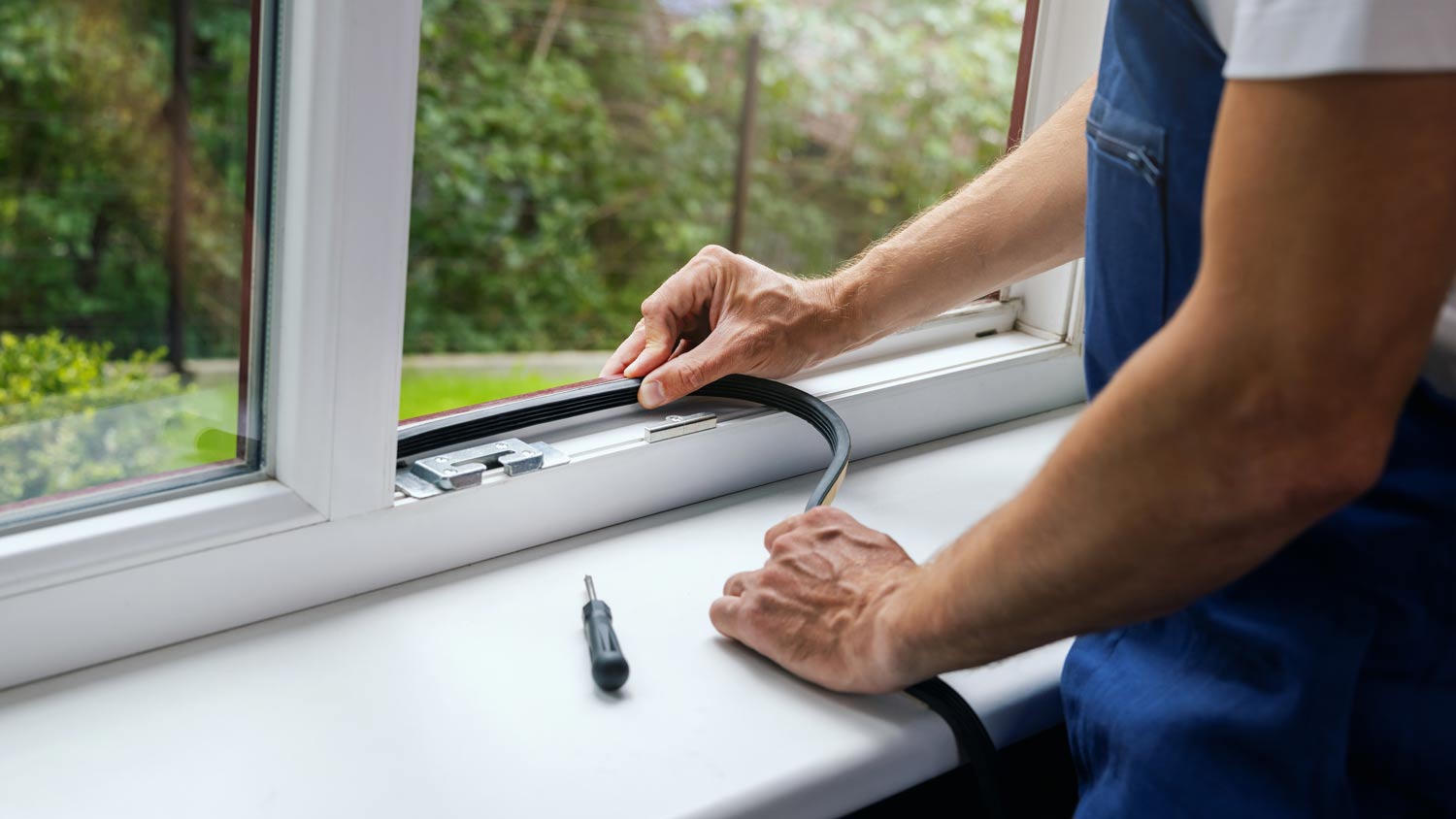
You can use weather stripping to seal the edges of doors and windows and prevent drafts, which can reduce energy costs. Weather stripping is available in various forms, including foam, felt, and rubber, and is easy to install and effective at reducing air leaks. It’s a great caulk alternative if you’re looking to improve energy efficiency.
| Pros | Cons |
|---|---|
| Reduces energy costs | Can require frequent replacement |
| Easy to install | Not waterproof |
| Comes in a variety of materials | Less durable |
| Reduces noise | Limited applications |
Best for:
Sealing doors and windows to prevent drafts
Reducing noise and improving home comfort
Energy efficiency improvements
Temporary solutions for seasonal changes

Silicone putty is a moldable material that can be shaped to fit various gaps and cracks. It provides a flexible, waterproof seal and is highly resistant to temperature changes. This putty is ideal for applications where flexibility and adaptability are required, making it a preferred choice for sealing irregular shapes or surfaces.
| Pros | Cons |
|---|---|
| Moldable | Limited life span |
| Flexible | May adhere poorly |
| Waterproof seal | Not good for all surfaces |
| Temperature-resistant | Requires curing time |
| Easy to apply and remove | More costly |
Best for:
Sealing irregular shapes and surfaces
Applications requiring flexibility
Outdoor applications
Areas needing a removable seal
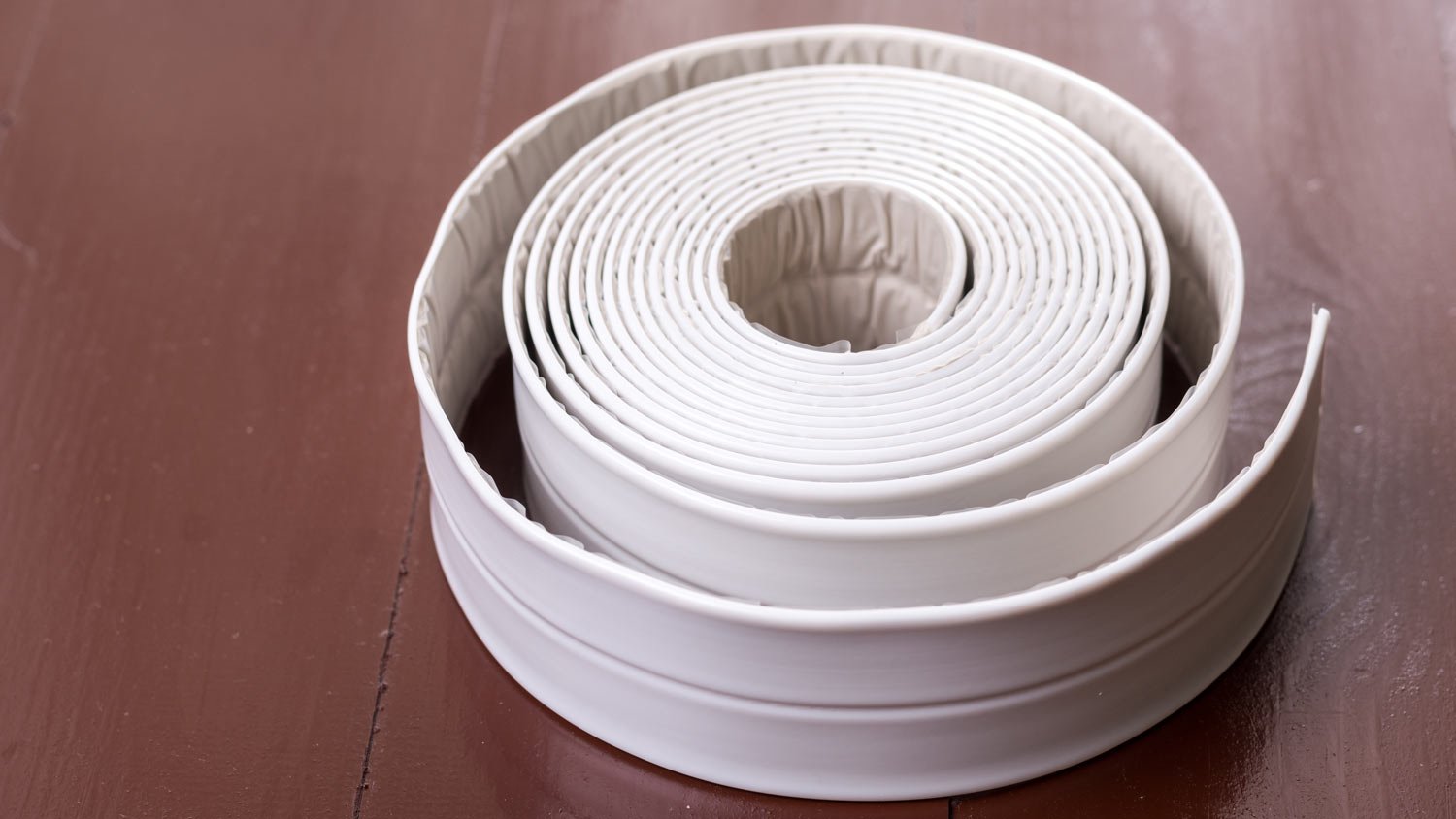
Caulk strips are pre-shaped adhesive strips designed to provide a clean, finished look around bathtubs, sinks, and countertops. They offer a neat, uniform seal without the mess of traditional caulk. You can apply caulk strips without using a caulking gun, so they’re a popular choice for those seeking a hassle-free caulking alternative in kitchens and bathrooms.
| Pros | Cons |
|---|---|
| Clean, uniform seal | Less durable |
| Easy to apply | May need frequent replacement |
| Mess-free | Limited flexibility |
| No special tools needed | Shorter life span |
Best for:
Sealing bathtubs, sinks, and countertops
Areas requiring a clean, finished appearance
Quick and easy bathroom or kitchen upgrades
Temporary solutions for rental properties
While caulk alternatives offer convenience and ease of use, there are instances where regular caulk is the superior choice. Traditional caulk is highly durable and flexible—especially if you’re using silicone instead of acrylic caulk—making it a long-lasting option for sealing areas consistently exposed to water or temperature fluctuations. Caulk is ideal for applications where you need a long-lasting, reliable seal.
Traditional caulk should be used for:
Sealing joints in showers and bathtubs (or anywhere water exposure is constant)
Adding a permanent seal on exterior windows and doors
Filling small cracks and gaps in walls and ceilings
Ensuring a flexible seal in areas exposed to temperature changes
If you’re not confident enough in your DIY skills to apply traditional caulk, enlist the help of a local caulking pro to ensure a gorgeous finish.
You will never find people who care as much as them. They are very meticulous in the job they perform My basement is so great no mold no smell so very clean they took time and effort to make sure everything was done the way I wanted it to be done. They go the extra mile for you. Joe and...
"The appraiser was incredibly professional and efficient. She provided prompt service and a detailed appraisal report, showcasing her attention to detail. I was impressed by her professionalism throughout the process. Highly recommend her services!
Ground Effects has performed two projects for us. Initially they had constructed a paver patio, retaining wall and paver sidewalk in 2014. The second project in 2022 consisted of a fire pit, retaining wall, drainage and driveway improvements around a newly constructed barn. The work was...
From average costs to expert advice, get all the answers you need to get your job done.

Sometimes, all your home needs is a new wall to make a room or provide an updated function to an existing space. Learn how much it costs to install a new wall.

Curious how much general contractors charge per hour? Discover hourly rates, key cost factors, and tips to save on your next home project.

Installing a dumbwaiter can save you time and energy. Learn how much a dumbwaiter costs with this guide.

Common types of ceiling tiles include metal, plastic, and mineral fiber. Explore ceiling tile materials and their strengths and weaknesses in this guide.
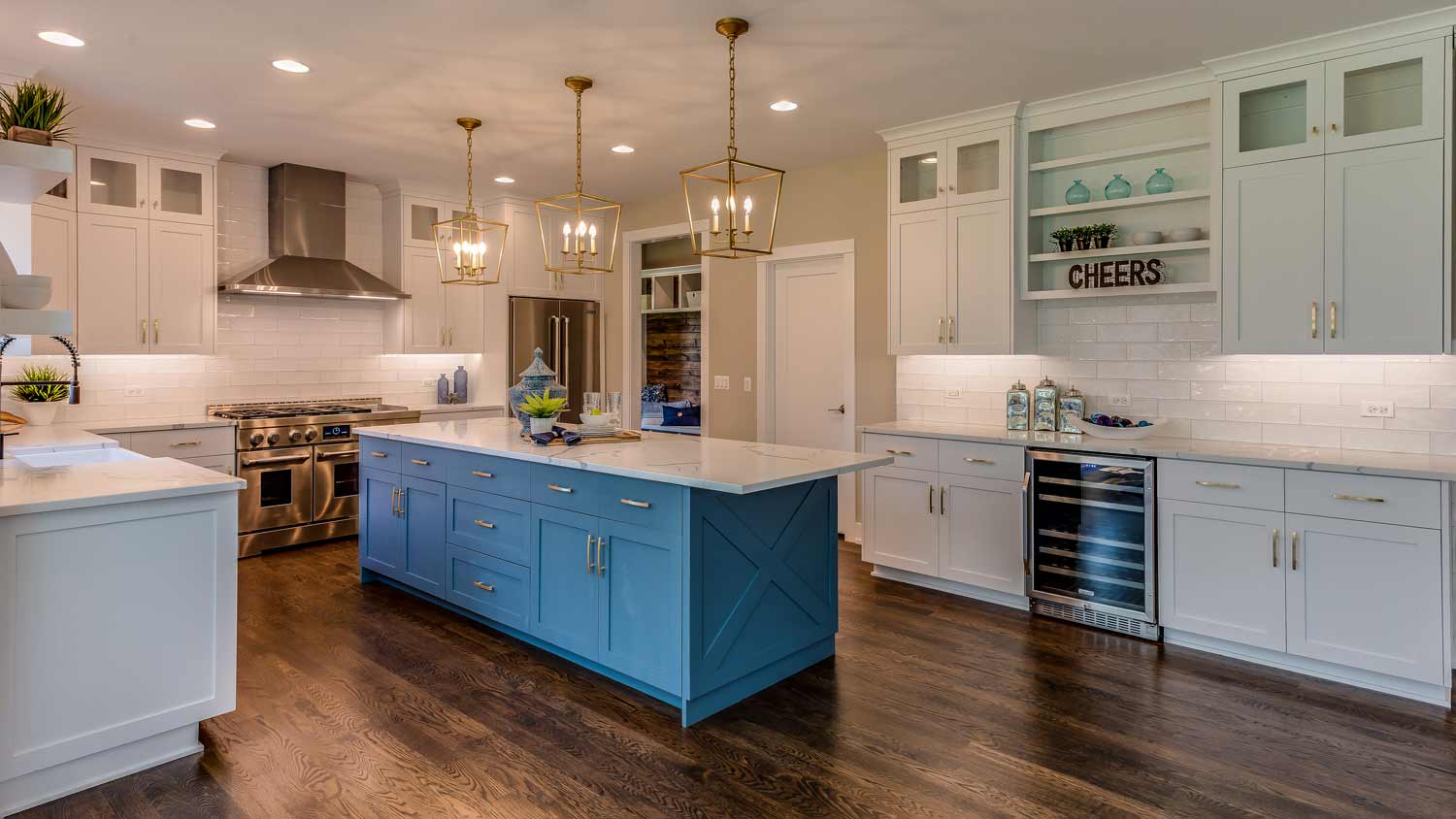
If you’re replacing your roof or flooring, you might be wondering, “How much plywood do I need?” The answer comes through a simple calculation.

A roll-in shower can increase safety in the bathroom and come with a high ROI. Read this guide to learn about how much a roll-in shower costs.